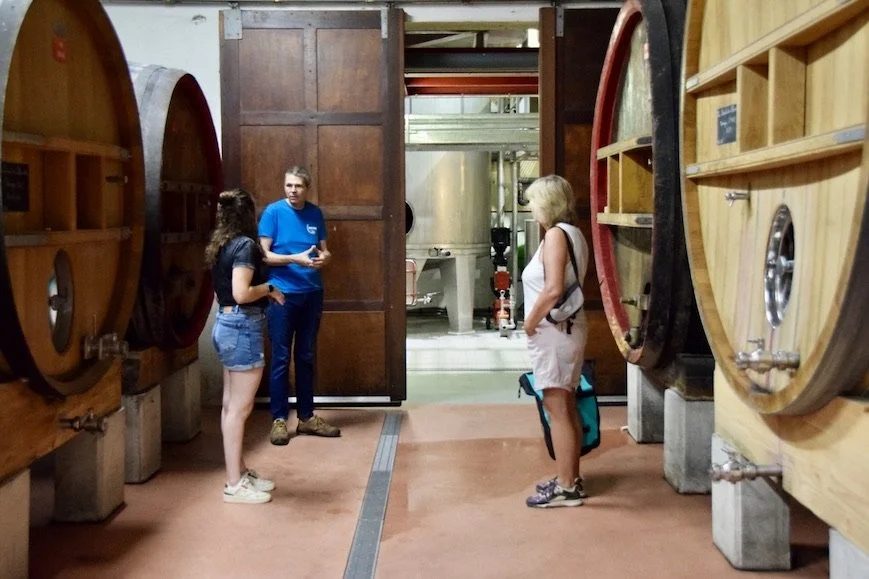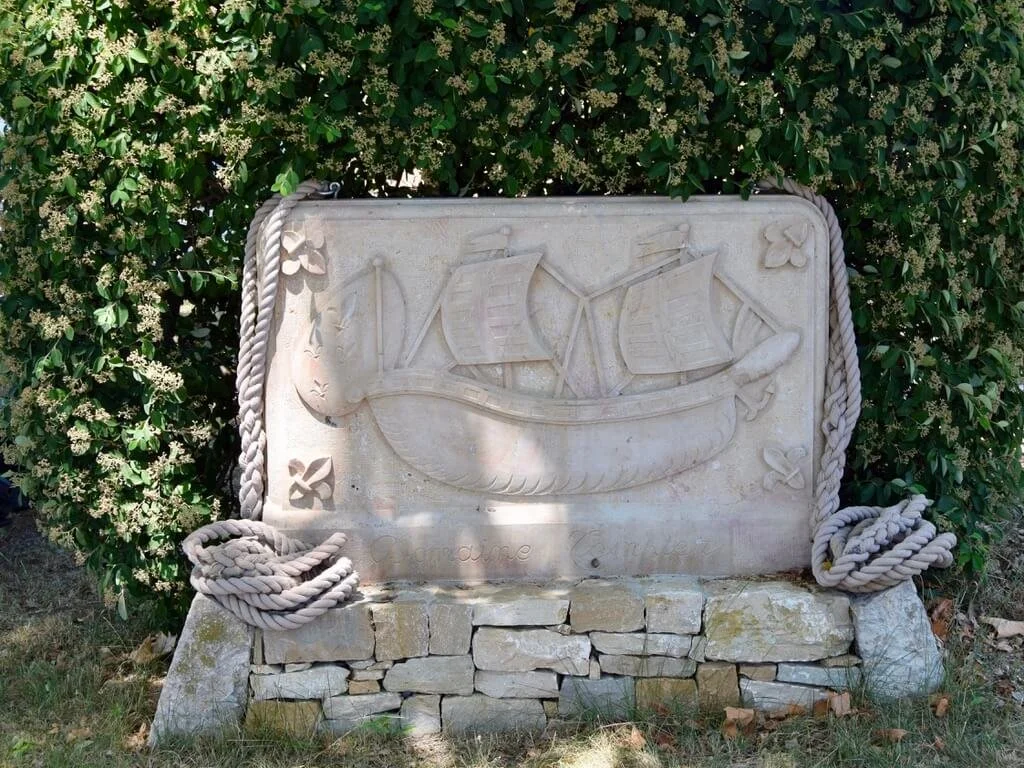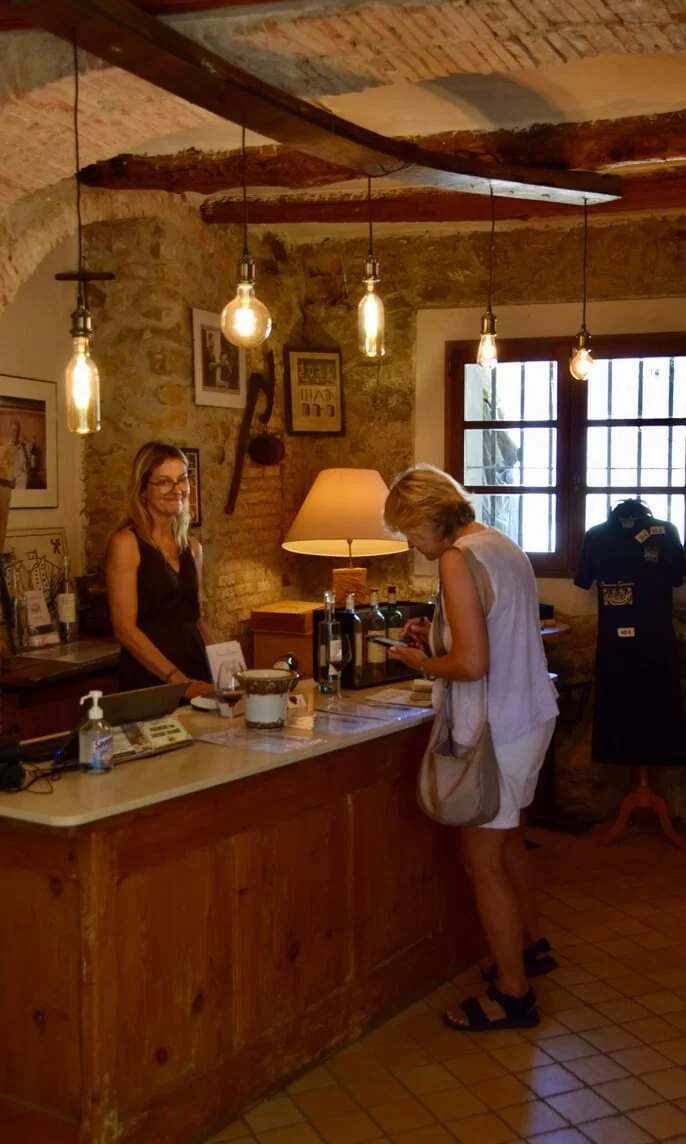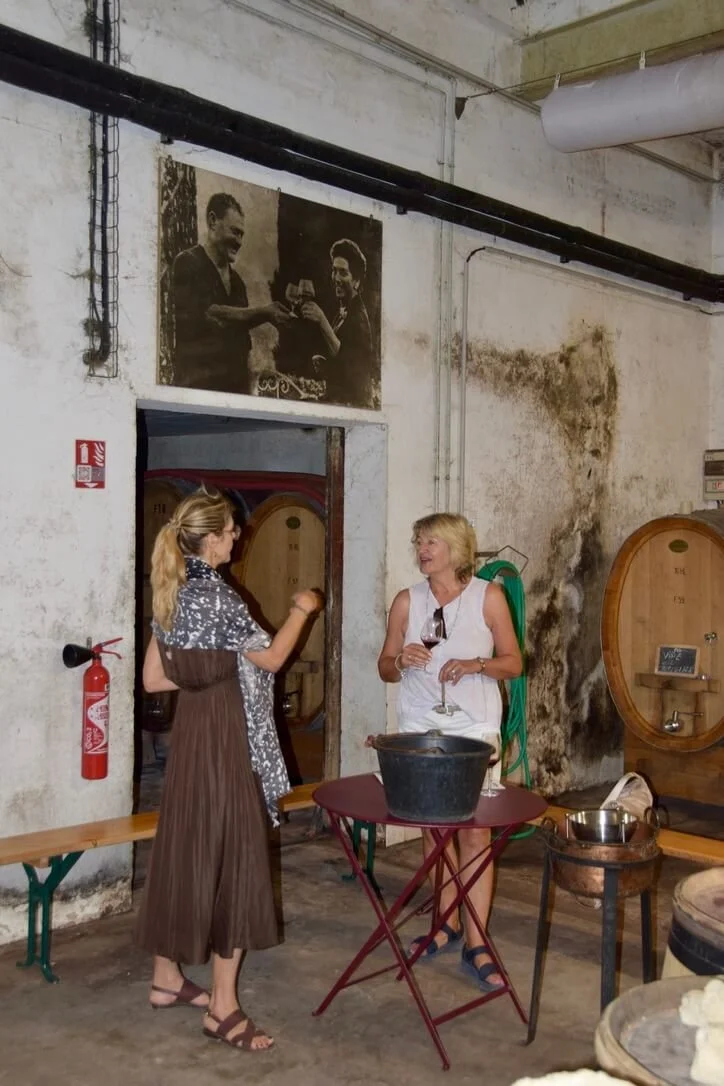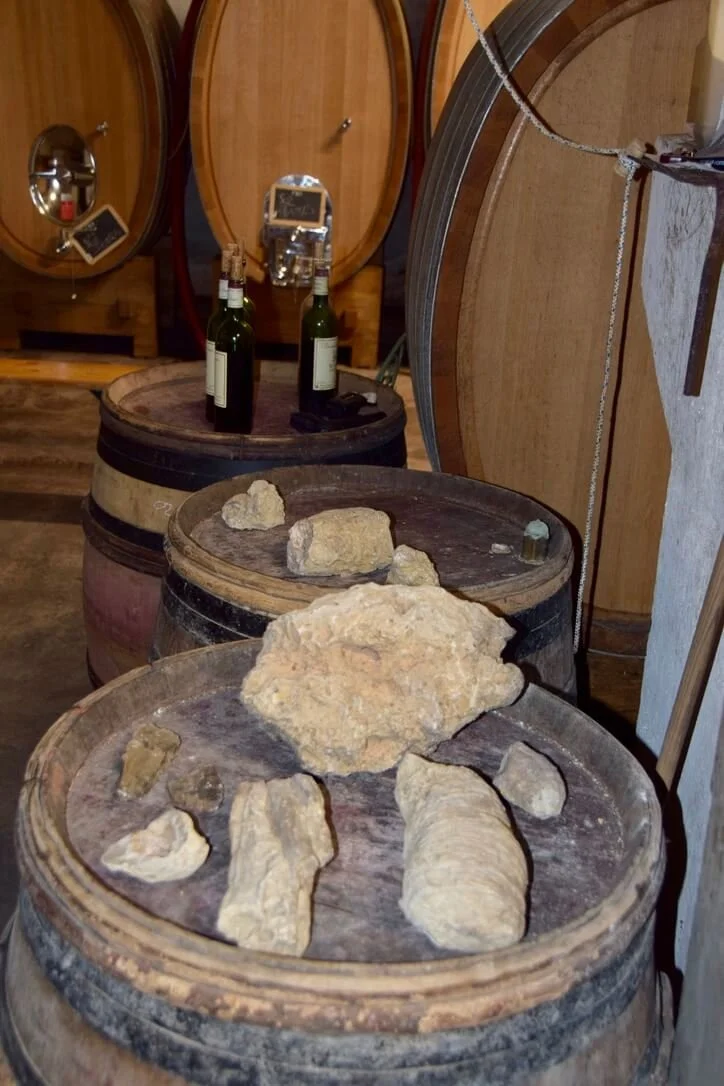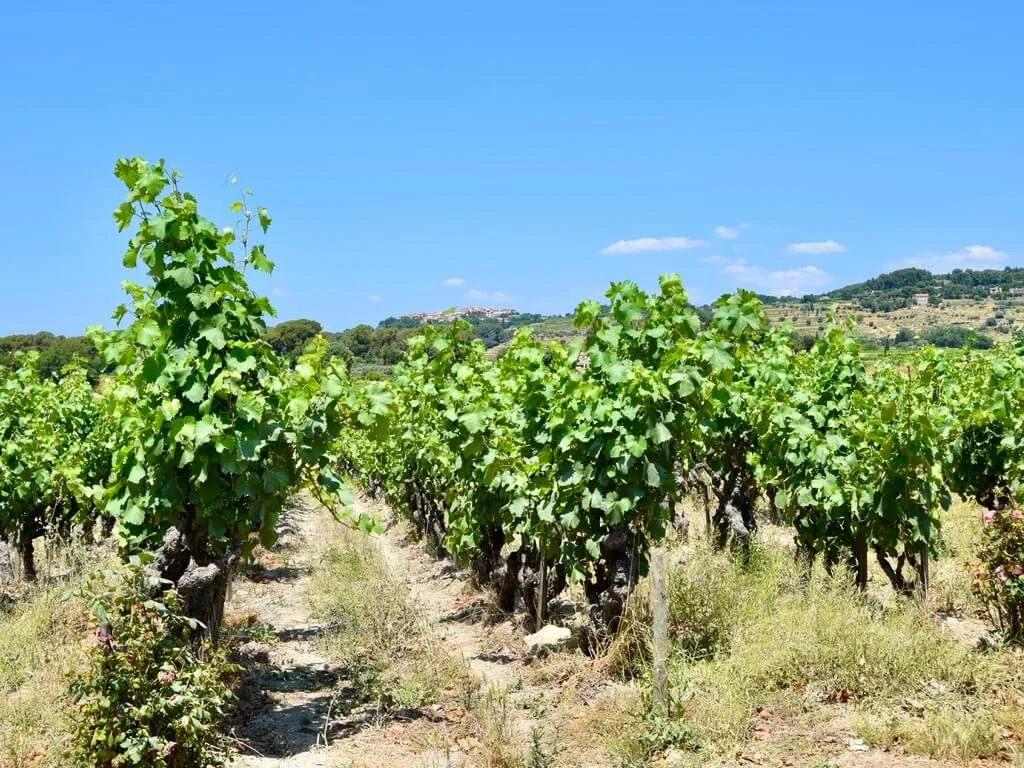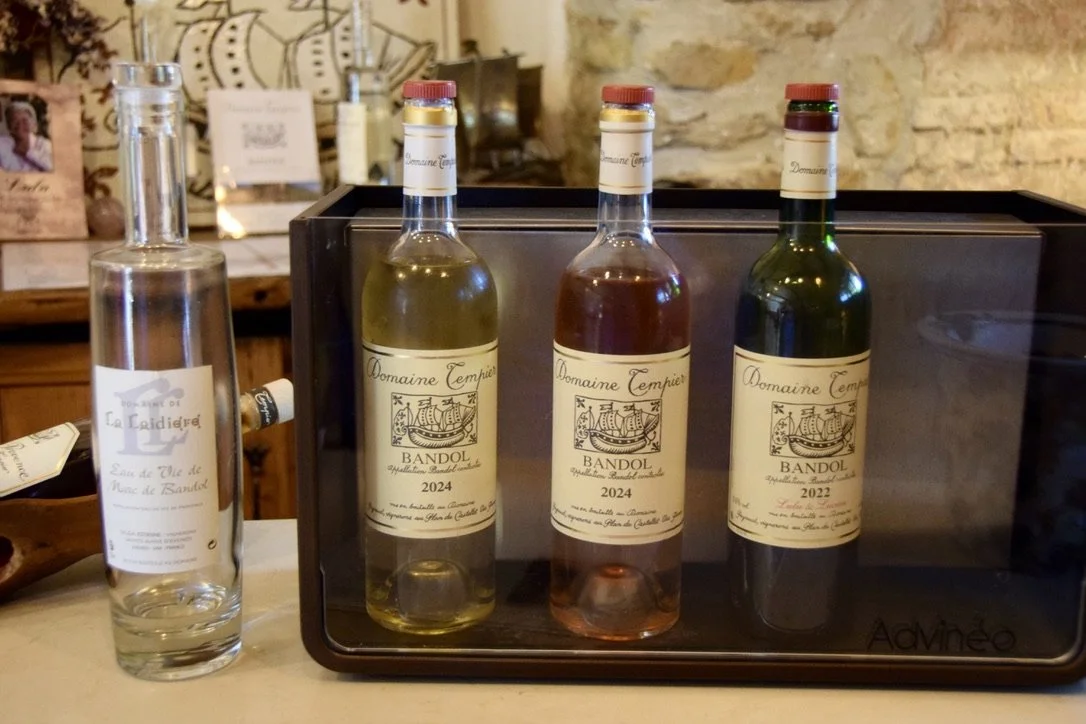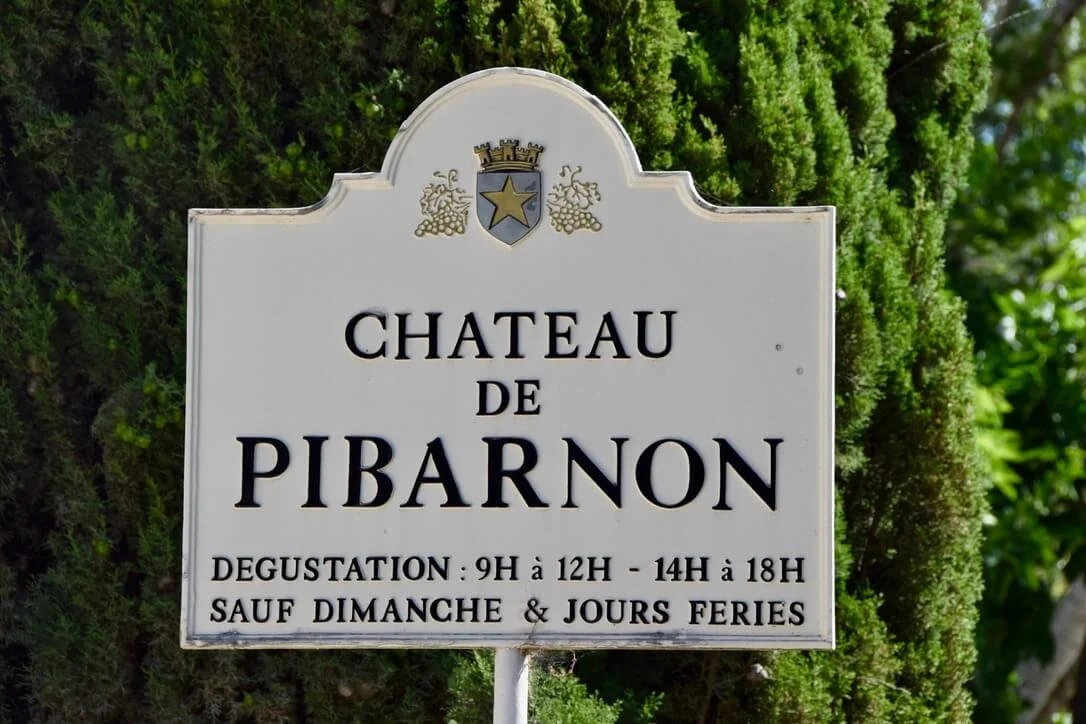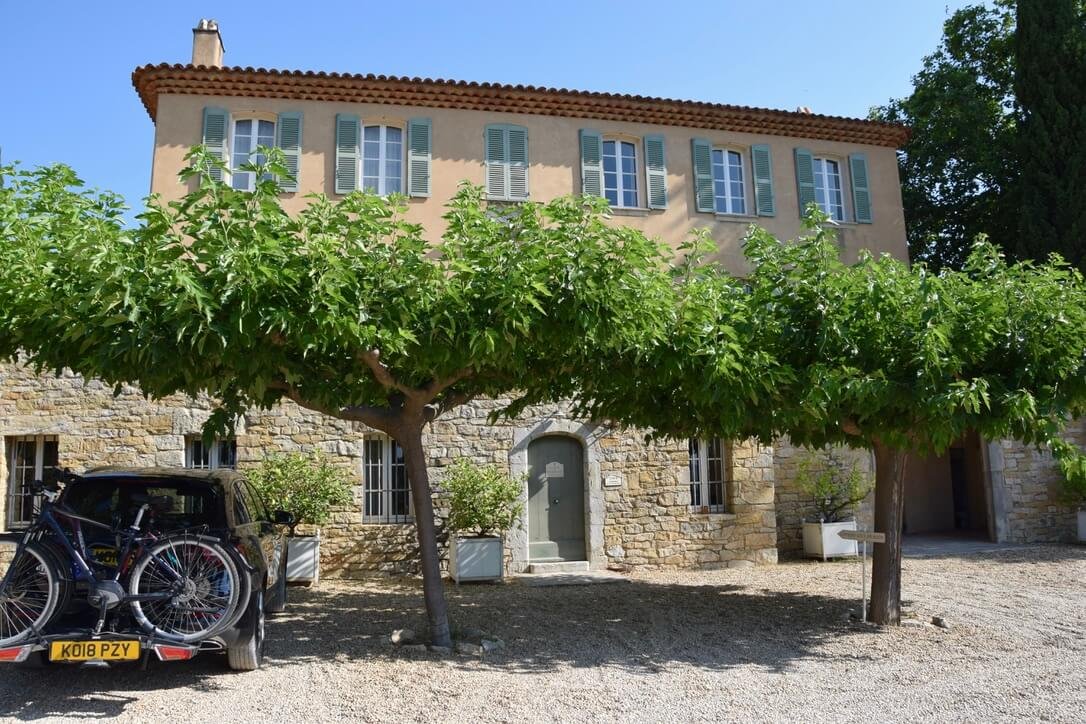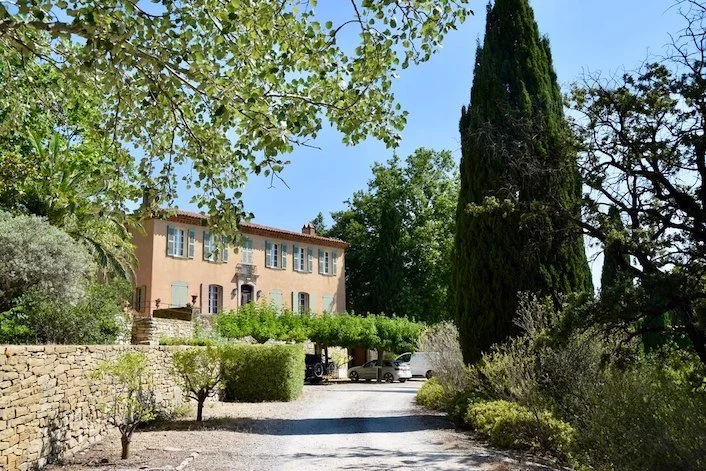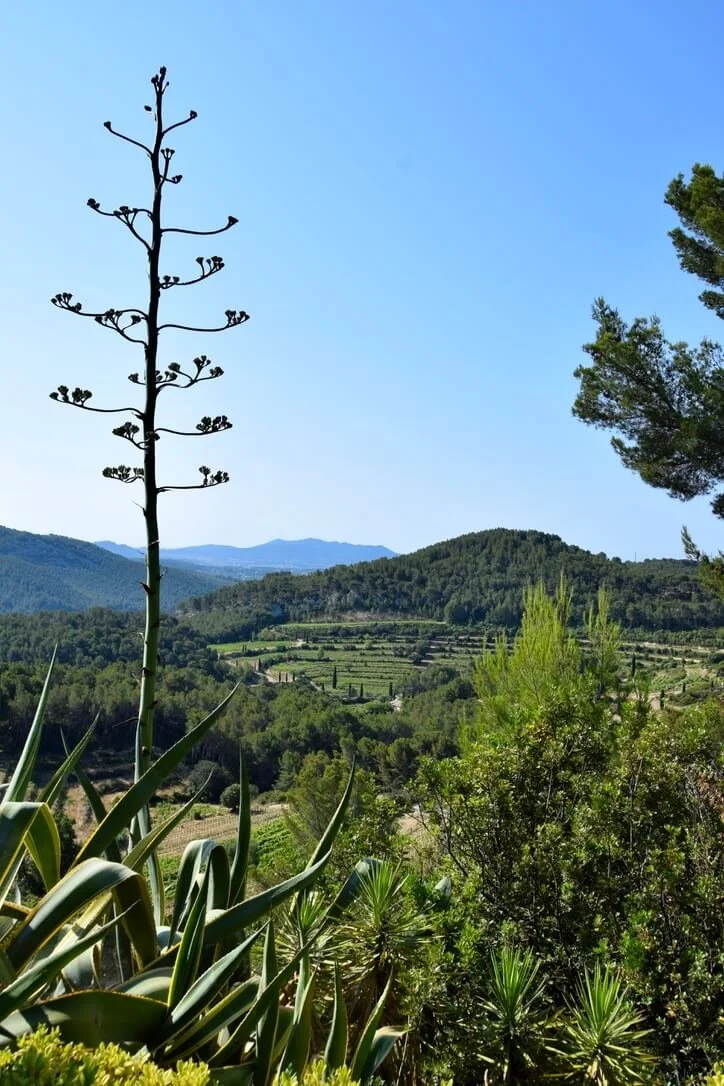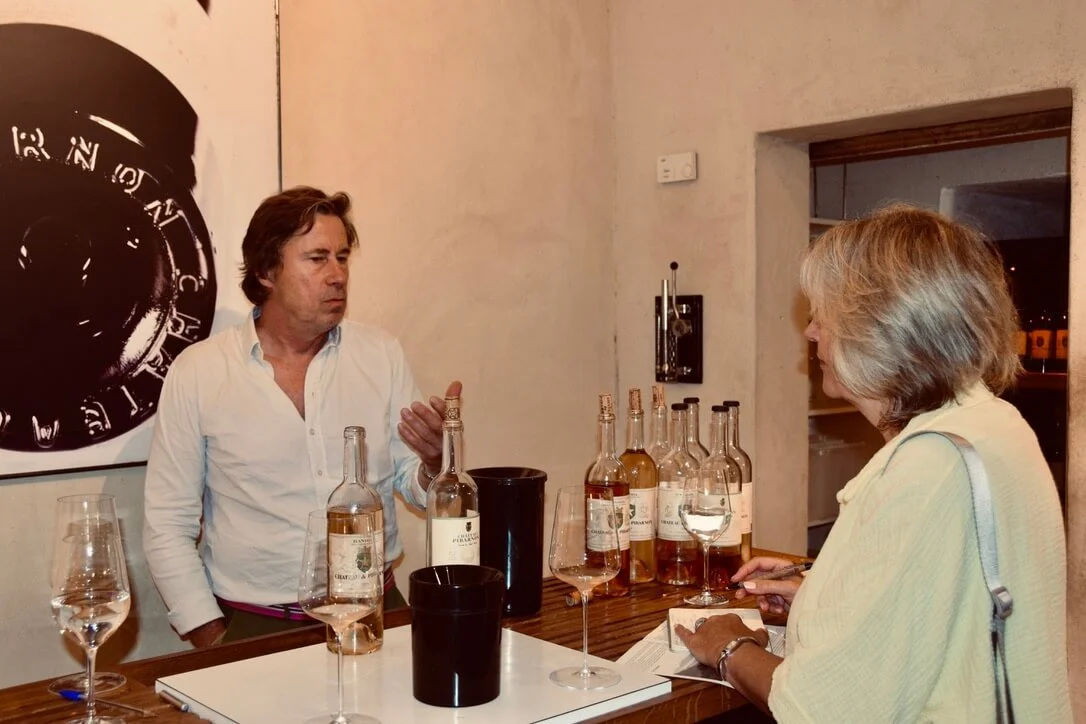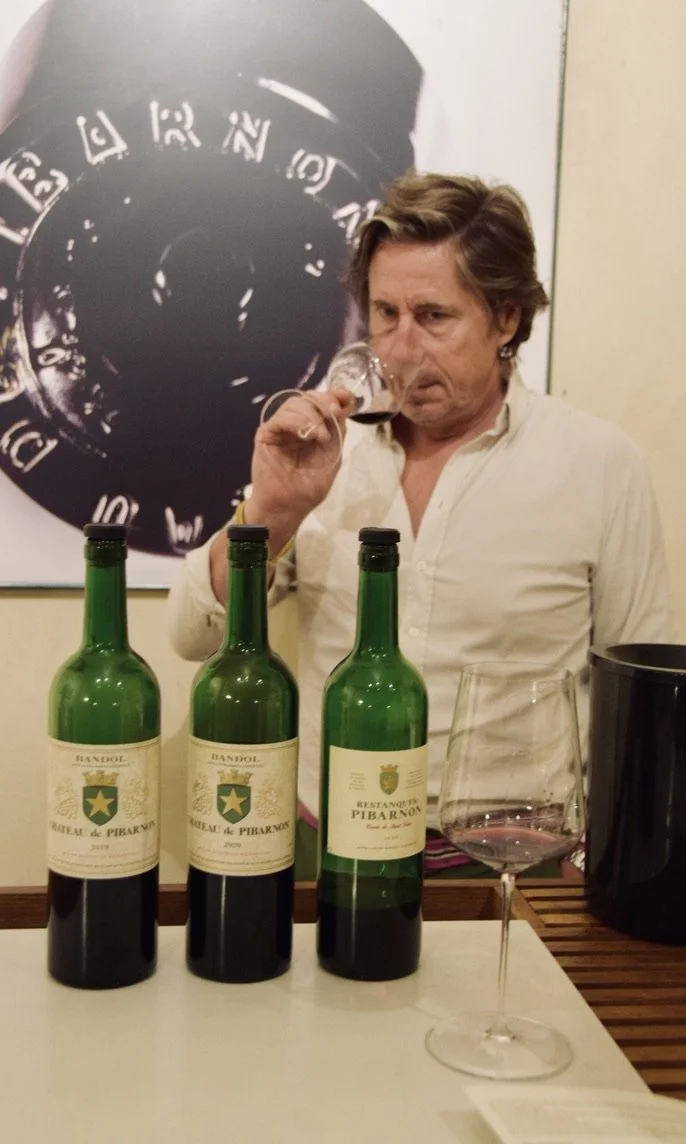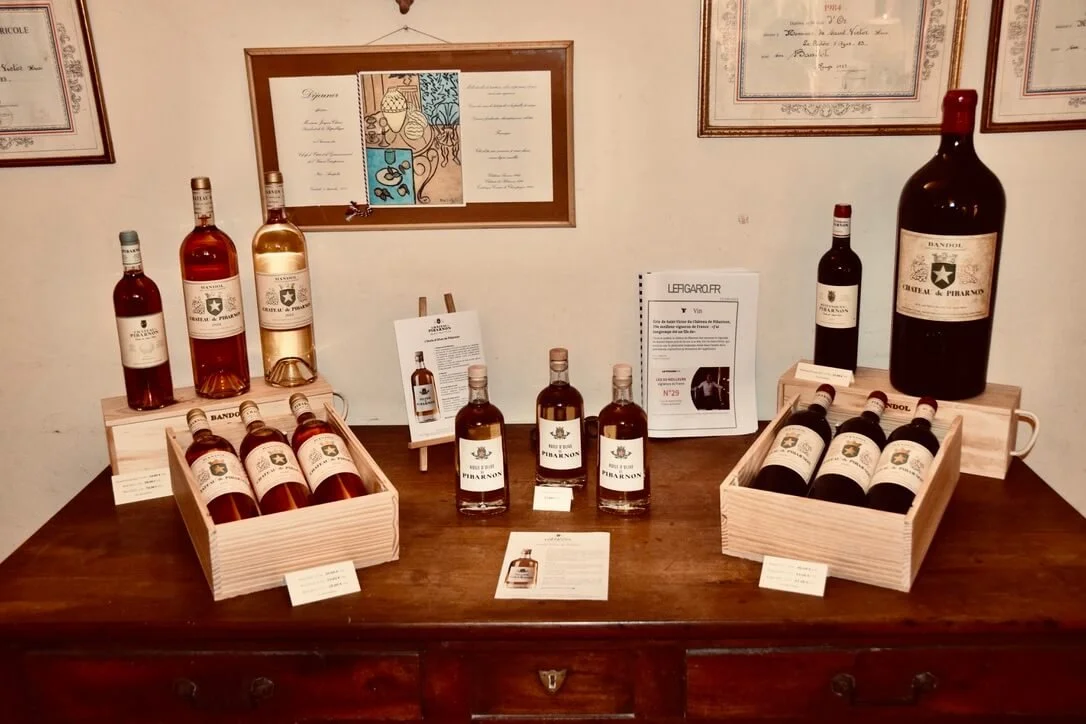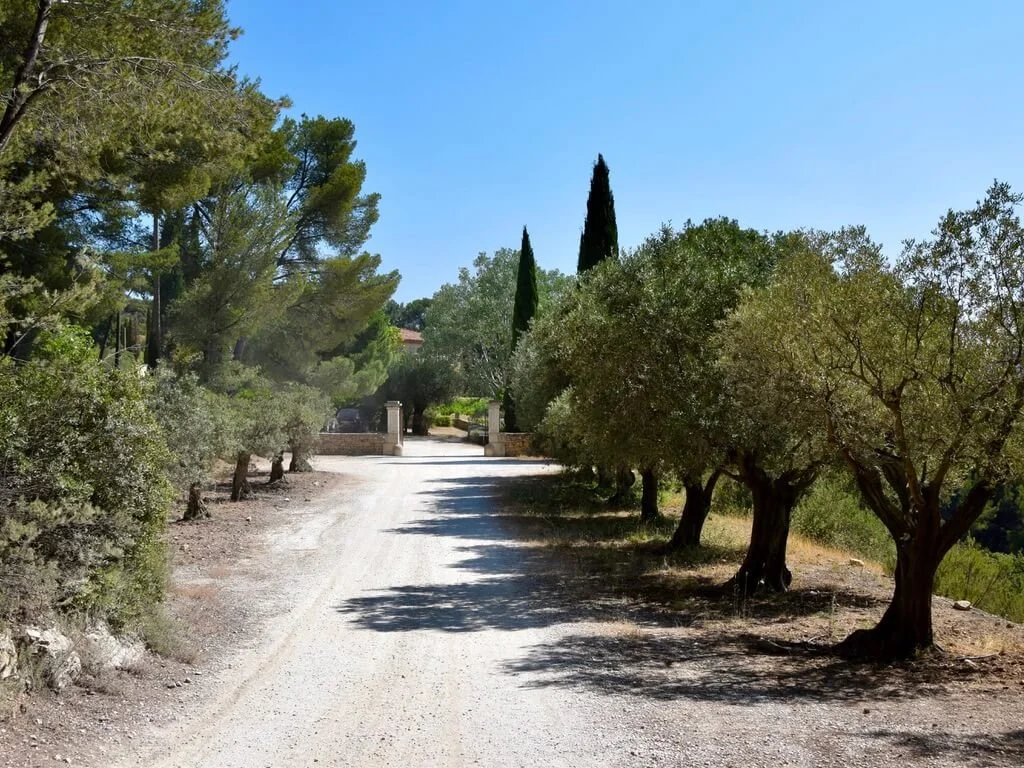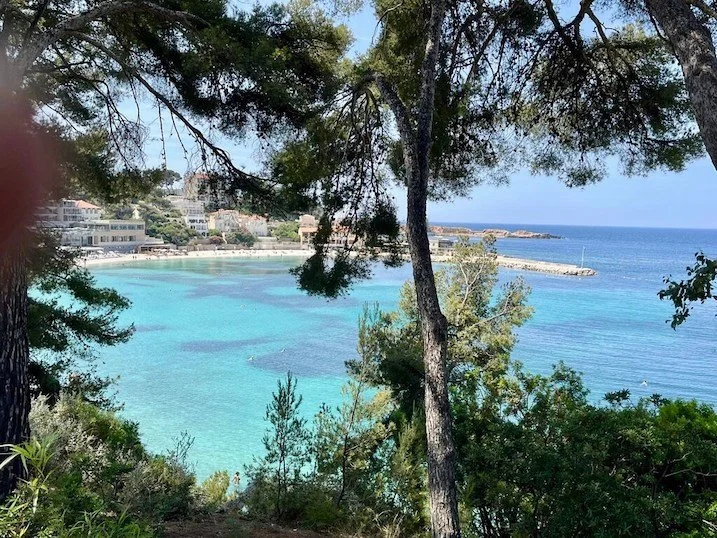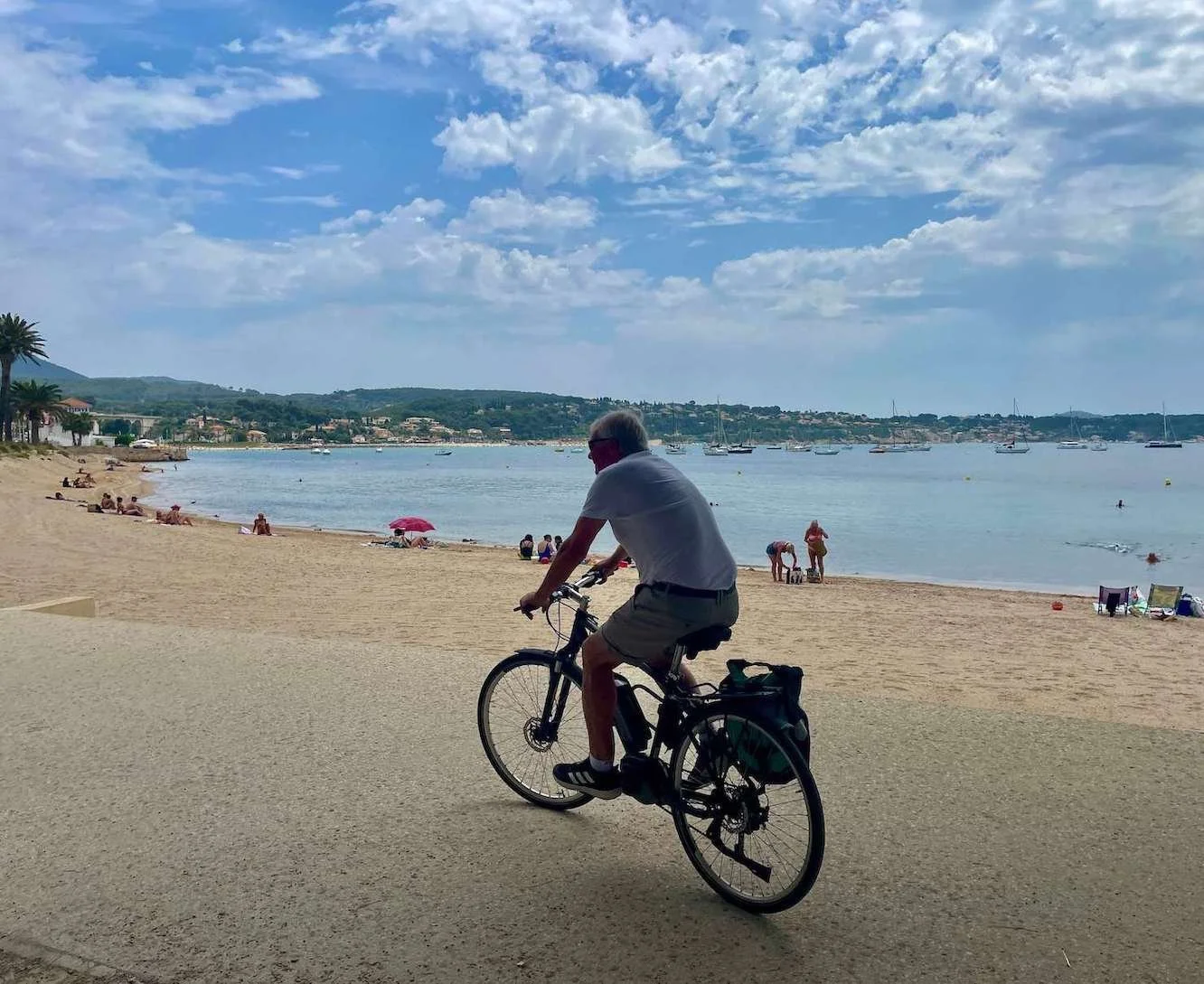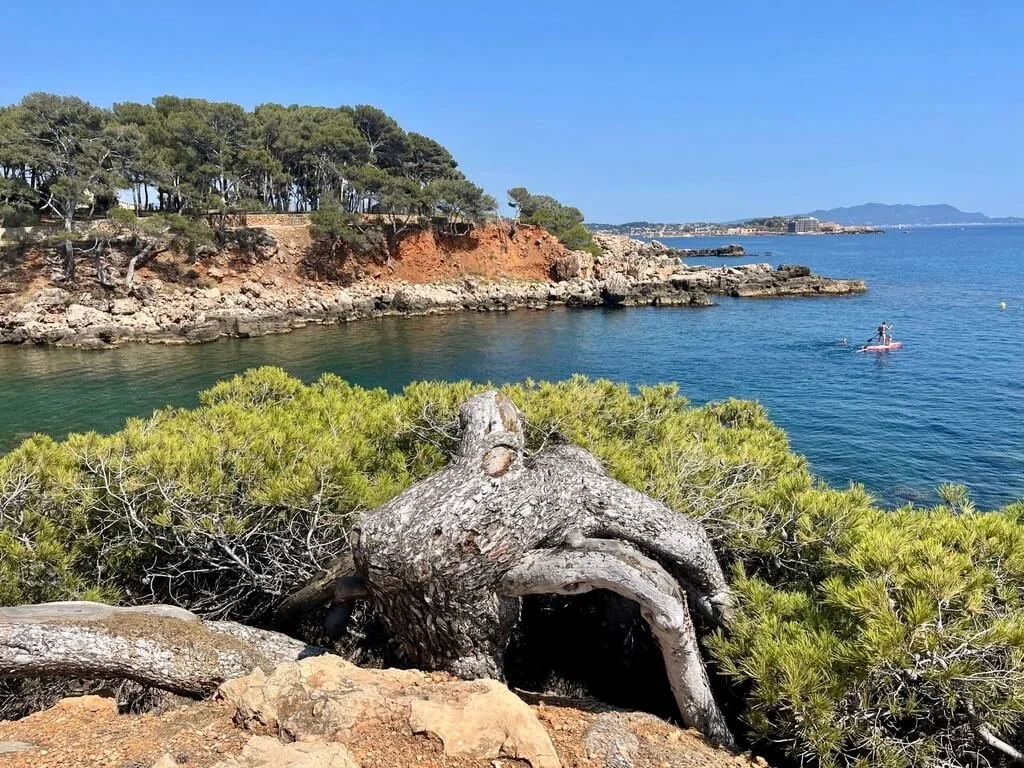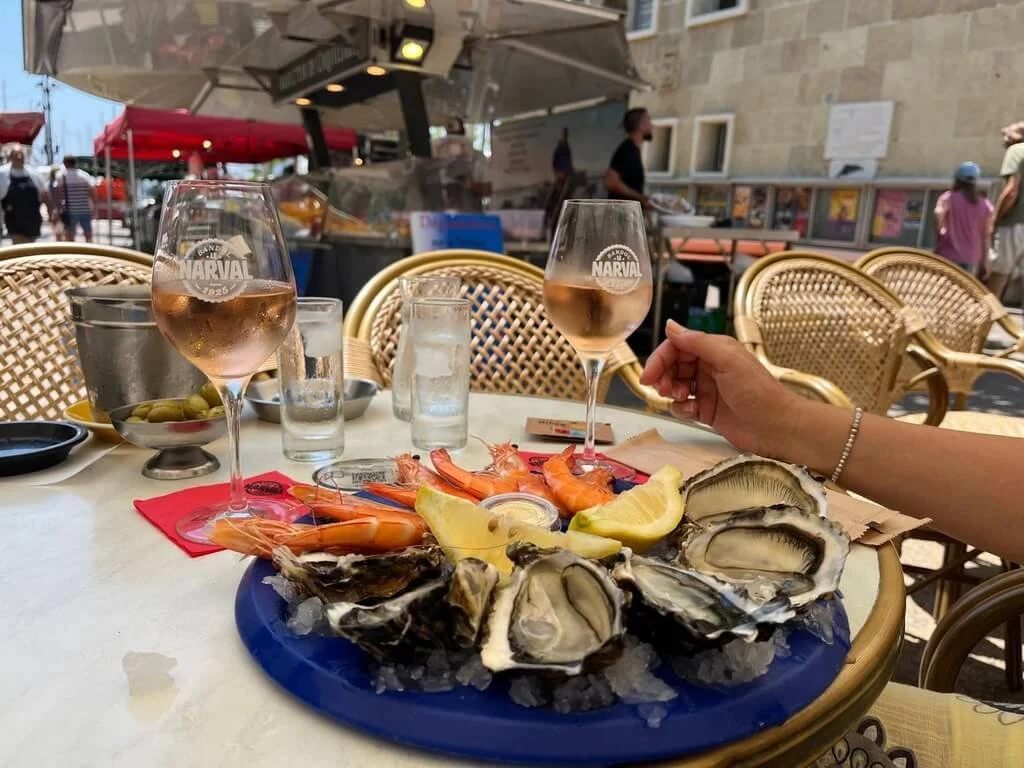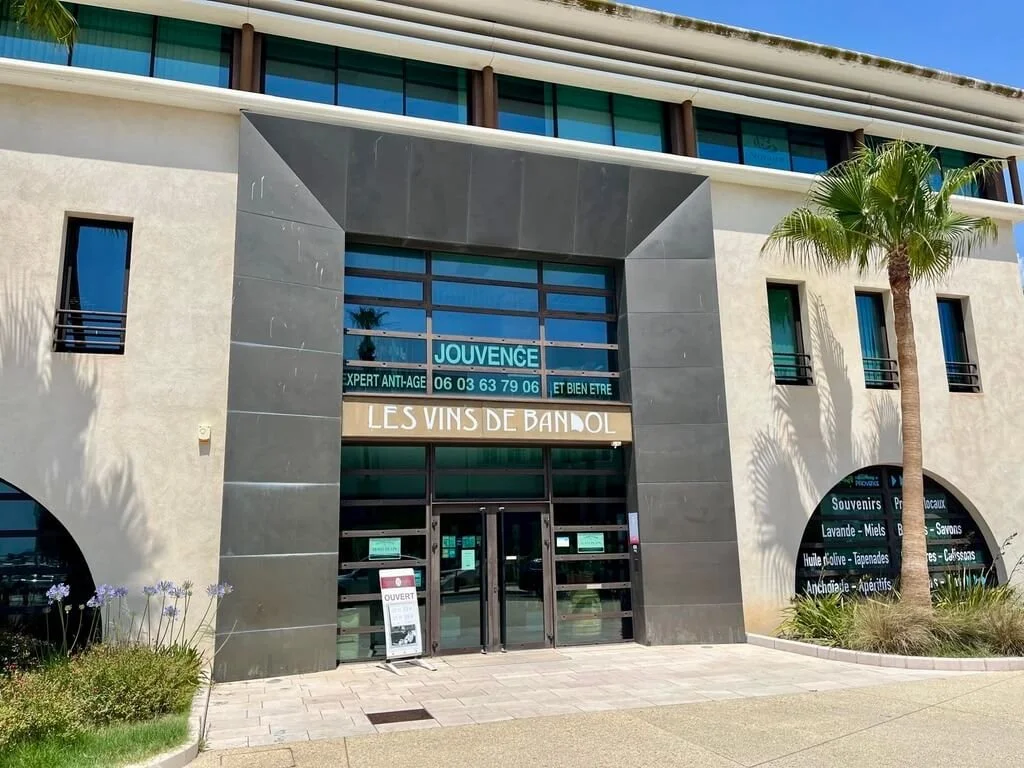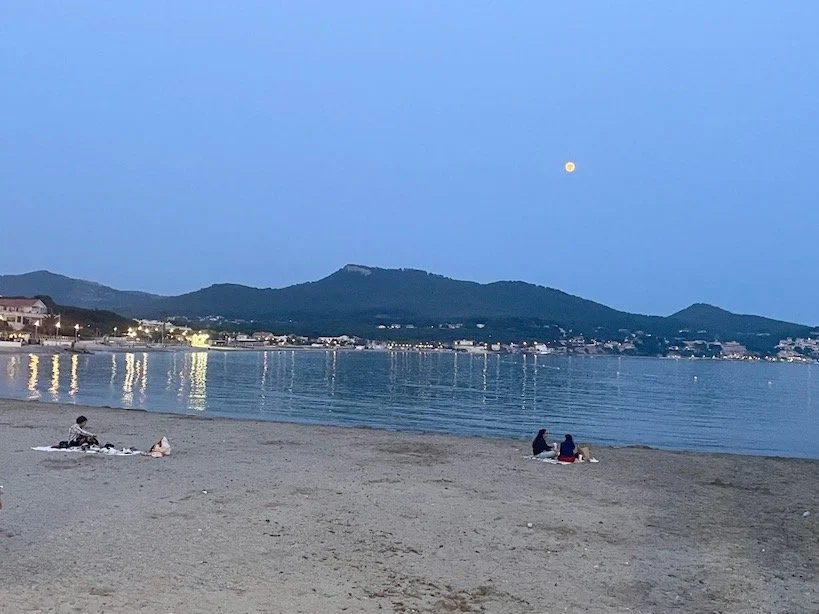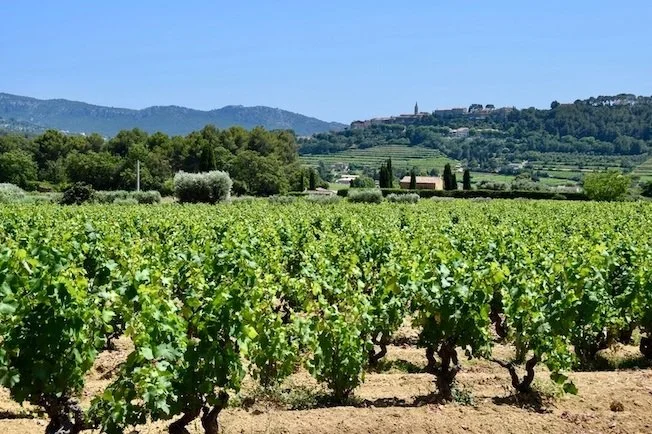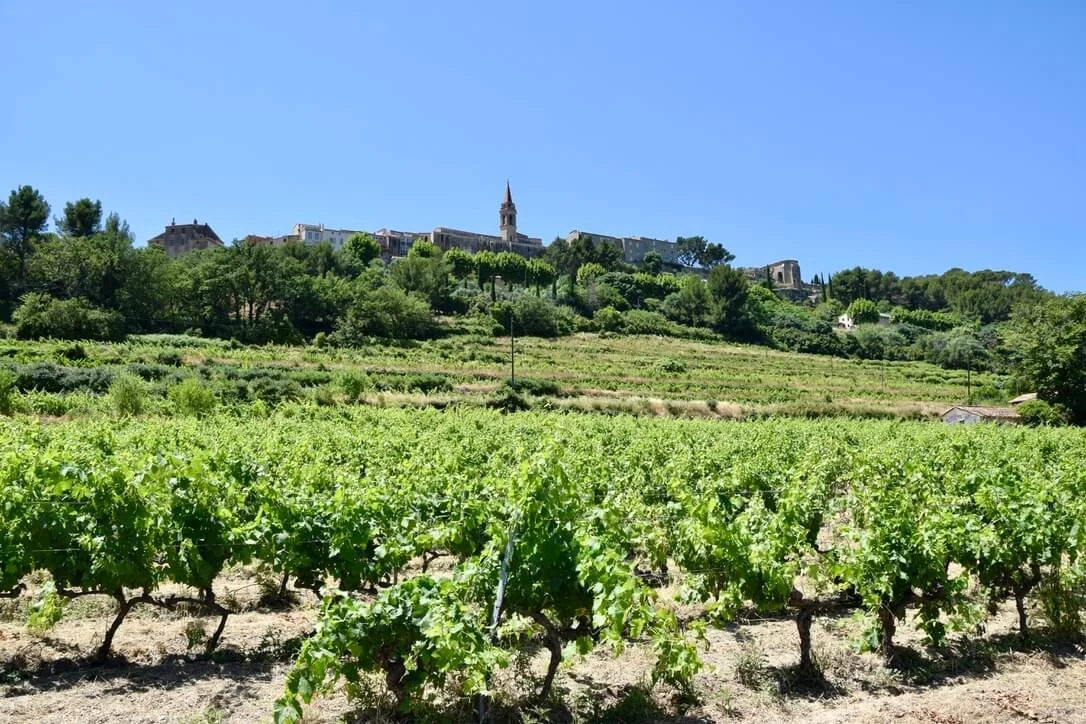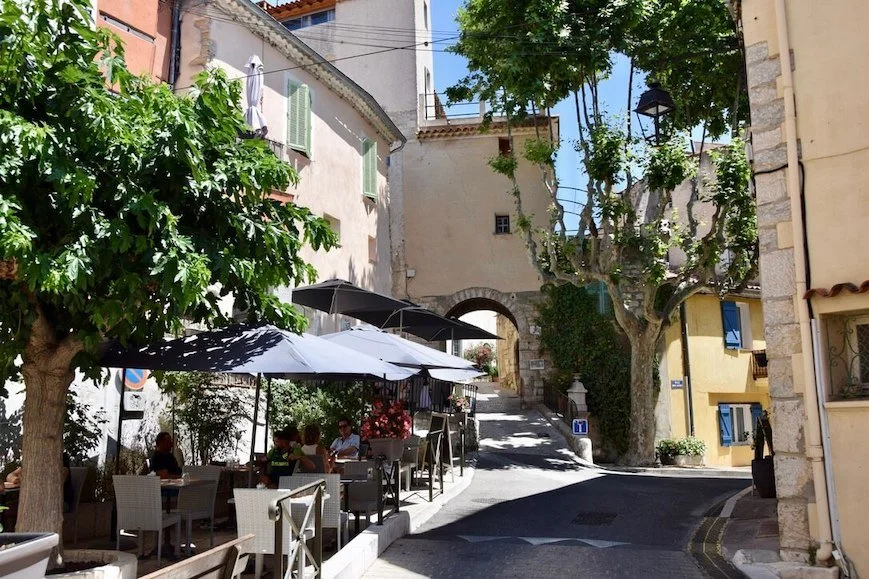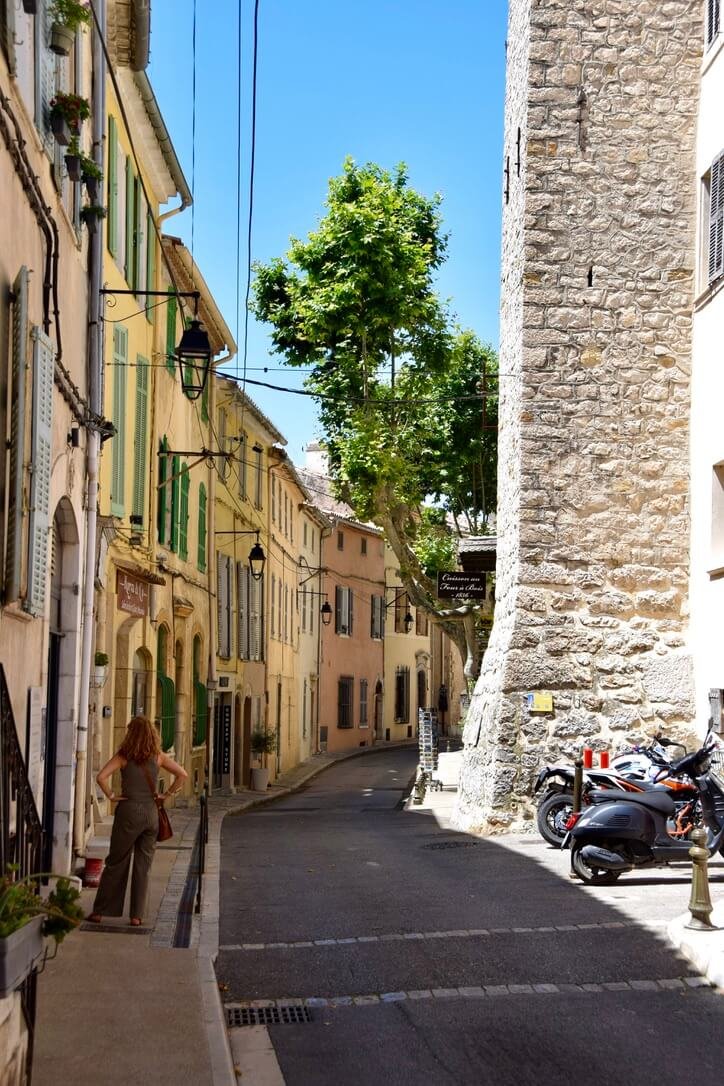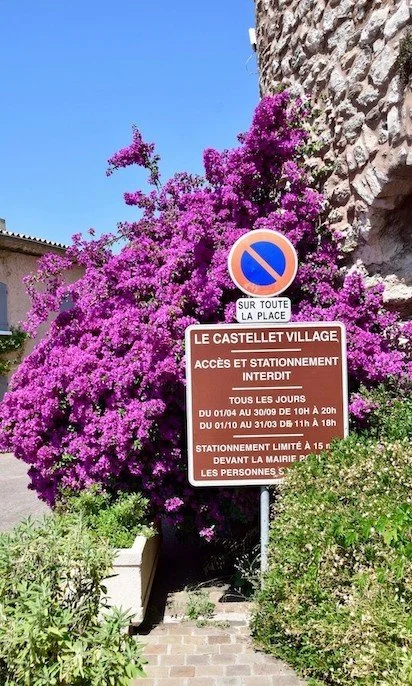Discover Bandol Provence in the south of France
Provence wine tour - Discovering beautiful Bandol in the Var region in France
Bandol vineyards in the foothills of the Sainte Baume Massif - Source: Winekeller
The Var region is one of the best places to visit in Provence, with its spectacular inland and mountain scenery, world-famous coastline, laid-back lifestyle and delicious gastronomy. It’s also known for its wines - naturally of course for the popular easy-drinking rosé Provence wine you can find throughout this part of France, but also for Bandol Provence wine, which is quite different in style and regarded as one of the best appellations on the French Mediterranean coast.
On a trip to the South of France we decided to visit Provence to spend a few days discovering the Bandol wine region and its unique Bandol Provence wines. We visited three different Bandol wine producers, all producing incredible wines, all with their own story to tell about this small but incredible French wine region.
Read on to see what we discovered!
The Var in France
France’s ‘le Var’ is located in the region of Provence-Alpes-Côte d'Azur in the heart of Provence and the French Riviera. It extends from west of Toulon on the coast to just east of Fréjus and then inland (the Haut Var), where it borders the Alpes de Haute-Provence region.
Var wines
Vineyards have existed in the Var for over 2500 years, making these the oldest vineyards in France and today the Var is the largest global producer of rosé wines. However some very good whites and reds are also produced.
In addition to the regional Var wines, ‘Vins du Pays Var’, there are three regional appellations:
Côtes de Provence: representing the greatest proportion of Var wines and made predominantly from Cinsault and Grenache grape varieties;
Côteaux Varois: mostly rosé, produced from grapes grown on the hillsides in inland Var around the pretty town of Brignoles;
Bandol : made from grapes grown in the South of France vineyards around the popular coastal town of Bandol.
Read on to learn more about the Bandol appellation and see here for more about Var wines.
Bandol vines in France’s beautiful Var region, Provence - source: Winekeller
The Bandol wine region
Bandol has a long wine history. Vines were first planted here in the time of the Roman Empire and the first vineyard was created around the village of Le Castellet. The wine trade here prospered over the centuries, with the terroir providing the perfect environment for growing vines and the proximity of key Mediterranean trading routes. The creation of a deep-water harbour in the port of Bandol helped trade to flourish further and in the 19th century Bandol wines featured regularly in the Royal court.
The Bandol AOC was created in 1941. Today the Bandol wine region covers about 1600 hectares of vineyards, with more than 60 wine producers, small compared to the vineyards devoted to ‘Côtes de Provence’ wines, but nevertheless it has a following around the globe for its unique wines.
The Bandol vineyards enjoy exceptional light and heat, with nearly 3000 hours of sun each year and lie in a natural amphitheatre, bordered by the spectacular Massif de la Sainte-Baume and falling down to the shores of the Mediterranean. The vines are planted on the south-facing hillsides on terraces divided by low drystone walls, called ‘restanques’, which have been painstakingly built and restored over the generations by the local vine growers. The prevailing Mistral wind here protects the vines from any rot.
The terroir across the Bandol wine region is very varied, mainly limestone and very pebbly, with, in places, sandy marls and sandstone. This varied terroir impacts the robustness and complexity of the wines produced.
The appellation area encompasses eight communes: Bandol, La Cadière d’Azur, Saint-Cyr-sur-mer, Le Castellet, Le Beausset, Evenos, Ollioules and Sanary.
More Bandol vines looking over to the Sainte Baume Massif - Source: Winekeller
What kind of wine is Bandol?
The Bandol appellation is unique in France in that it focuses on the Mourvèdre grape variety - known as the ‘King of Bandol’ and perfectly suited to the climate, soils and terroir in this part of Provence.
70% of Bandol wines are now rosé but Bandol is known mainly for its Mourvèdre red wines. Bandol wines are blended wines, not single grape varieties.
Bandol Provence wines are deep and complex. They can be enjoyed relatively young but producers also make long-lived, tannic Bandol wines which need more time to be discovered. Most wines are aged in large oak ‘foudres’ instead of smaller barriques, which don’t suit the Mourvèdre grape so well.
Bandol red wine
A Bandol red wine must be made of more than 50% Mourvèdre - maximum 95%. The Mourvèdre grape is often blended with Grenache and Cinsault, or also with Carignan, Syrah and Rolle. Bandol reds must also be aged for a minimum of 18 months in oak foudres.
Bandol rosé wine
The minimum amount of Mourvèdre allowed in a Bandol rosé wine is 20% and it is mostly blended with Cinsault.
How does Bandol compare to other rosés?
A Bandol rosé wine is structured like a red wine - it can be enjoyed young, but it ages very well and it tends to be quite complex and dry. Bandol rosé wines make excellent gastronomic wines, so very unlike the typical Provençal rosé wine, which is more of an easy-drinking, light, summer style of wine.
This is an important point - don’t expect a Bandol rosé wine to match the popular perception of a typical ‘Rosé de Provence’- one is aged and complex and the other is light and young.
What is ironic though, is that the most common perception of ‘Provençal rosé’ is this lighter style, a style enjoyed by the many tourists who flock to this part of the world in the Summer months and which has been successfully promoted around the world, but in reality traditional Provençal gastronomy requires a more complex, robust wine.
Bandol white wine
Bandol produces a small quantity of full bodied, often underrated white wine, which is made from the Clairette grape variety (minimum allowed 50%), blended with Bourboulenc and Ugni Blanc. The vines are mostly planted on the north-facing hillsides, which gives the wines greater freshness.
Visit to La Bastide Blanche
Arriving at La Bastide Blanche - Source: Winekeller
Our first Bandol winery visit was to the 3rd generation family winery, La Bastide Blanche, located in the small commune of Sainte-Anne du Castellet, close to the beautiful Bandol villages of La Cadière d’Azur and Le Castellet.
The family began making wine in 1972 and today farms 50 hectares of vineyards, producing about 200,000 bottles each year of mostly rosé and red wines. White wine production is smaller, starting about 20 years ago. La Bastide Blanche is also an olive oil producer and there are some 400 olive trees on the estate. Cycling around the area, it was evident to us that olive oil production is probably just as important here as wine production.
The soils here are clay/limestone and in the Summer the daytime temperatures can be very high, with cooler nights, influenced by the Mediterranean sea, just 7km away and the Sainte Baume mountain.
La Bastide Blanche was certified organic in 2012 and 10 years later, in 2022, the winery was certified biodynamic.
Our wine tasting:
We enjoyed a lovely tour of the cellars and a wine tasting at La Bastide Blanche - please note it’s always best to book a visit in advance.
We started our tasting with two white wines, the Estagnol 2019, aged in ‘egg’ barrels for 5-6 months, which gives it a lot of structure and the Contrechamps 2017 , made with grapes from old vines.
These were followed by a lovely Bandol rosé wine, the Rosé 2021, with 14% alcohol, a complex, gastronomic rosé and then two red wines, firstly the Cuvée Estagnol 2022, made from the classic Bandol grape Mourvèdre from old vines, blended with Carignan - displaying the unique flavours of the south of France: thyme, black olive, lavender and liquorice - and then the Cuvée Fontanéau 2022 , 90% Mourvèdre and 10% Grenache. This last wine is made with grapes from a small vineyard plot with red clay soils, so tasted quite different from the previous wine and this one is aged in smaller barrels, rather than the larger oak foudres.
A wonderful tasting and a great introduction to Bandol wines!
Our visit to Domaine Tempier
We then went on to visit Domaine Tempier in Le Plan du Castellet, owned by the Peyraud family, now 6th generation and a true pioneer of the Bandol appellation and Bandol wines.
The story of Domaine Tempier goes back to the 1830s, but in 1936 when Lucie (Lulu) Tempier married Lucien Peyraud, the Domaine Tempier wine story began. Lucien bottled his first wine in 1943 and was influential in the development of the Bandol AOC’ which launched in 1941. The first Domaine Tempier red wine was produced in 1951 and with it, a new label was launched featuring the distinctive Bandol boat, which remains core to the company’s brand today.
Along with wife Lulu, Lucien went on to champion Bandol wines, uniquely made with Mourvèdre grapes and he is known as the ‘spiritual father’ of Bandol wine. They had seven children together and the future of Domaine Tempier was secured!
Today Domaine Tempier covers 60 hectares of vineyards, comprising 3 single vineyards, each with its own distinctive terroir - La Tourtine, located near Le Castellet, Cabassaou, a small single hectare plot located just below La Tourtine and featuring old vines (at least 60 years old) and La Migoua, an entirely different plot, with complex soils set on a hillside at 300 metres altitude.
The ‘Bastide’ 7 hectare plot sits at the heart of the estate, where the first vines were planted and today produces the grapes which go towards the Domaine Tempier Classic Cuvées - or blends.
Domaine Tempier wines
The 3 single vineyards produce some special, distinctive wines that need to age about 10-15 years.
We were fortunate to taste each one:
La Tourtine - 85% Mourvèdre - salty and fresh
La Migoua - 55% Mourvèdre - more complex with more tannins
Cabassaou - 92-94% Mourvèdre - dense, complex wine, typical of Mourvèdre
Whilst these single vineyard wines are flagship Bandol wines, the estate’s best sellers are the Classic Cuvées, which can age 5-6 years:
White 2024 - 60% Clairette, 30% Ugni blanc, matured in wood for 8-10 months
Rosé 2024 - 50% Mourvèdre - blended with Grenache and Cinsault
‘Lulu and Lucien’ red cuvée - 75% Mourvèdre - the estate’s signature wine
You can book a Domaine Tempier tasting and cellar tour here - we thoroughly enjoyed our visit, experiencing a piece of Bandol history!
Our visit to Château de Pibarnon
The famous amphitheatre vineyard of Château de Pibarnon - Source: Winekeller
Our final visit was to the beautiful, historic Château de Pibarnon, in its incredible, magnificent ‘natural amphitheatre’ setting high up in the hills, one of the highest spots in Bandol, overlooking the Mediterranean, famous for its incredible vineyard setting, its unique terroir and its wines, especially its flagship red wine.
The special high altitude location at 300 metres and the unique terroir are what sets Château de Pibarnon apart. The unique micro-climate created by the altitude and the cooling sea breezes serves to protect the south-east facing vines, even in times of drought and the stone terraces built across the hillside help to retain water.
The soils here are also unique in the Bandol wine region, calcareous soils, rich in microfossils, which explain the aromatic finesse and elegance of the Pibarnon wines.
The origins of Château de Pibarnon date back to the mid 1950s, when an Italian bricklayer from Piedmont, Italy invested in this unique location, cultivating 3.5 hectares of Mourvèdre and went on to produce an excellent red wine. The vines were taken on by Henri and Catherine de Saint Victor in 1977, who acquired the estate and subsequently added a further 6 hectares of vines and built the winery and a new house, a perfect replica of an 18th-century Provençal bastide.
Over the 1980s the reputation of the great Pibarnon red wines grew and demand started to outweigh supply. The vineyards were further extended including the purchase in the late 1980s of the now famous ‘amphitheatre’ vineyard plot - 20 hectares of land directly in front of the winery - which Henri and Catherine shaped and transformed into a vast amphitheatre facing both the southeast and the north and resembling an ancient Greek theatre.
Henri and Catherine’s son, Eric joined his parents in the winery in 1989, the vintage which catapulted Château de Pibarnon to global fame when it was proclaimed one of the world’s top 150 wines by the Slow Food Guide.
The estate has gone from strength to strength under the management of Eric de Saint Victor, carrying on the legacy of his parents. Today the estate is certified organic and about 40% of wines produced - mainly red wines still today - are exported across the world. From the humble beginnings of just 3.5 hectares in 1977, Château de Pibarnon vineyards extend to over 50 hectares.
You can read the full story of Château de Pibarnon here.
Our wine tasting at Château de Pibarnon:
We were really fortunate to have Eric de Saint Victor introduce his famous wines to us. We started with the Château de Pibarnon Rosé, which is two thirds Mourvèdre and one third Cinsault - a powerful but at the same time elegant rosé which pairs perfectly with typical Provençal dishes, eg rouget, rockfish, bouillabaisse, also veal, poultry, pork - and cheese.
We then went on to the Château de Pibarnon White, made with 55% Clairette and 30% Bourboulenc grapes, from the later-ripening north-facing slopes - superb paired with fish and shellfish, floral, elegant and beautifully balanced.
We finished our glorious tasting with two red wines, from two different vineyard plots. Firstly Les Restanques de Pibarnon, made with 70% Mourvèdre, 30% Grenache grapes grown on the hillsides, a wine designed to be enjoyed younger than its older brother, the emblematic, classic Château de Pibarnon, made with 90% Mourvèdre and 10% Grenache grapes, a wonderfully full-bodied yet elegant wine, juicy, with well-balanced tannins - a Superb Bandol red wine often compared to an Italian Nebbiolo.
Wow - what superb wines and excellent examples of how fine a Bandol ‘Mourvèdre’ wine can be. This is such a special Bandol wine estate and such an incredible setting - contact Château de Pibarnon to arrange your visit!
Exploring the Bandol wine region - things to see and do
The Bandol wine region is in the Provence Sud Sainte Baume region of the Var - a beautiful region framed by the Mediterranean sea and the stunning Sainte Baume massif, with traditional Provençal villages to explore, beautiful nature to enjoy and of course the incredible Provençal gastronomy and Bandol wines to savour.
The view from Bandol vineyards towards the Mediterranean and La Ciotat - Source: Winekeller
Le Castellet - a fine example of the beautiful Bandol Provençal perched villages - Source: Winekeller
Discover the beautiful coastal resort of Bandol
This was our first time visiting Bandol and we fell in love with it straight away! There’s so much here to enjoy, including a large and safe sandy beach, beautiful rocky coves and inlets, a stunning coastal path, a lively harbour area with its yachts and charming traditional fishing boats, a daily food market, a huge weekly Provençal market, a vibrant sea front with shops and restaurants and a charming old town.
We particularly loved visiting the daily morning food market, buying some fresh seafood and then enjoying it with a glass of wine for lunch in the nearby bar, watching the world go by!
We also recommend you visit the Maison des Vins de Bandol to discover Bandol wines - the shop is located on the sea front right in the heart of Bandol.
Plan your trip here and visit the tourist office in the centre of town.
Discover Bandol’s neighbouring coastal resorts
Bandol is neighboured on both sides by another two wonderful seaside resorts - Saint-Cyr-sur-Mer and Sanary-sur-Mer - enjoy their beautiful sandy beaches and rocky coves and their old towns, where you will find some excellent restaurants and laid-back holiday living.
Explore the beautiful hilltop villages amongst the vineyards
Discover the stunning, traditional villages in the hinterland of the Provence Sud Sainte Baume region - all within easy reach of Bandol. We particularly loved visiting:
La Cadière d’Azur
Just 15 minutes drive from Bandol, La Cadière d’Azur is a typical Provençal village, perched on a hill with stunning views over the vineyards below. Stroll through the quiet, shaded main street, lined with plane trees, with its charming restaurants, colourful tables and inviting artisan shops.
Le Castellet
Le Castellet is a unique medieval city with its winding alleyways, lined with artisan shops and restaurants leading up to the main square with its beautiful church and amazing views.
Explore the Sainte Baume massif
The beautiful mountain ridge framing the Bandol wine region is the Sainte Baume Massif - a beautiful nature reserve, but also a significant pilgrimage site, home to the Cave of Mary Magdalene, where legend has it Mary Magdalene spent the last 30 years of her life in solitude.
Conclusion
Not only is the Bandol wine region one of the most beautiful French wine regions to visit, we can highly recommend visiting to discover these unique Bandol wines - a very special place and very special wines!






